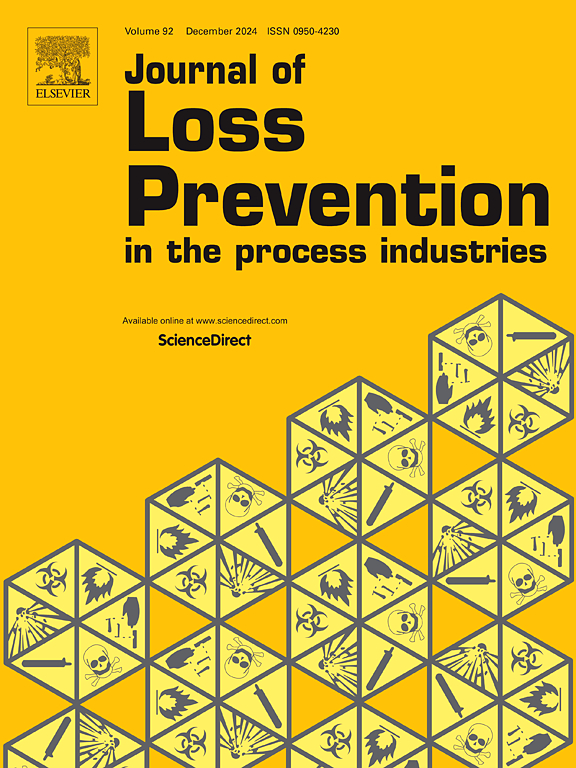A new small-scale dust cloud minimum ignition energy apparatus
IF 3.6
3区 工程技术
Q2 ENGINEERING, CHEMICAL
Journal of Loss Prevention in The Process Industries
Pub Date : 2025-02-20
DOI:10.1016/j.jlp.2025.105580
引用次数: 0
Abstract
Dust explosions pose a serious threat to safety and capital in many process industries. The proper management of this hazard is partially reliant on accurate ignitability data for flammable dusts. The minimum ignition energy (MIE) of a dust is one such quantification, which quantifies the likelihood of ignition for a flammable dust based on experimental evidence. Since the industrial revolution, many experimental methods have been developed for testing the MIE of ignitable dusts. This manuscript presents a novel, small-scale device for testing dust cloud MIEs. This device was designed to be modular and to easily integrate into the existing hardware of the popular Kühner MIKE3 MIE testing device. Since the Kühner MIKE3 is a well-trusted device that produces repeatable MIE results, the new small-scale device was designed specifically to return comparable MIEs. The device was designed to create a dust dispersion similar in dynamics to those of the Kühner MIKE3, such that ignition behavior in the two devices would be similar. A novel technique of using high-speed video to holistically analyze in-tube dust dispersions is presented. Experimental data from the video technique was used to optimize the dispersion dynamics in the small-scale device. Functionality of the small-scale device was verified by the testing of three control dusts in both the new small-scale device and the MIKE3, with MIE results in agreement for each dust. The small-scale device presented in this work is fast and simple to operate and requires much less sample than traditional MIE testing methods. These features make it ideal for testing expensive or hazardous dusts., or dusts for which sample quantity is limited.

一种新型小型粉尘云最小点火能量装置
在许多过程工业中,粉尘爆炸对安全和资金构成严重威胁。这种危险的适当管理部分依赖于可燃性粉尘的准确可燃性数据。粉尘的最小点火能量(MIE)就是这样一种量化,它根据实验证据对可燃粉尘的点火可能性进行量化。自工业革命以来,人们发展了许多测试可燃性粉尘MIE的实验方法。本文提出了一种新型的小型尘埃云密斯测试装置。该设备被设计为模块化,可以轻松集成到流行的k hner MIKE3 MIE测试设备的现有硬件中。由于k hner MIKE3是一种值得信赖的设备,可以产生可重复的MIE结果,因此新的小型设备专门设计用于返回可比的MIEs。该装置的设计目的是产生一种类似于k奈尔MIKE3的粉尘分散动力学,从而使两种装置的点火行为相似。提出了一种利用高速视频对管内粉尘分散进行整体分析的新技术。利用视频技术的实验数据,在小型装置中优化色散动力学。通过在新的小型装置和MIKE3中对三种控制粉尘进行测试,验证了小型装置的功能,每种粉尘的MIE结果都一致。与传统的MIE测试方法相比,本工作中提出的小型装置具有快速,操作简单,所需样品少得多的优点。这些特性使其成为测试昂贵或有害粉尘的理想选择。或样品数量有限的粉尘。
本文章由计算机程序翻译,如有差异,请以英文原文为准。
求助全文
约1分钟内获得全文
求助全文
来源期刊
CiteScore
7.20
自引率
14.30%
发文量
226
审稿时长
52 days
期刊介绍:
The broad scope of the journal is process safety. Process safety is defined as the prevention and mitigation of process-related injuries and damage arising from process incidents involving fire, explosion and toxic release. Such undesired events occur in the process industries during the use, storage, manufacture, handling, and transportation of highly hazardous chemicals.

 求助内容:
求助内容: 应助结果提醒方式:
应助结果提醒方式:


